
Ambitious Plans for Our Cultural Treasures Will Transform Sarasota as We Know It
For much of the past year and a half, life for area cultural organizations has been, as for many of us, simply about surviving the pandemic. Dealing with shuttered box offices, disappearing revenues and the inability to proceed with any kind of business as usual, our arts scene was in a “just hang on” mode.
Or was it? While the 2020-21 seasons originally set may have been canceled or reimagined, that didn’t stop work that had already begun on planning for the long-term future. Perhaps it could be said that the time away from presenting regular schedules even aided leaders in facing forward, giving them the chance to focus on the big picture.
And the future of the arts (and sciences) here is indeed big. Multiple capital campaigns raising millions of dollars are proving that. The influx of newcomers (many with deep pockets), boosted by urbanites fleeing bigger cities during Covid-19, may prove a boon to fund raisers with ambitious goals. The numbers provide an almost staggering look at what things might like look five, 10, even 20 years from now. Let’s break it down with peeks at a few of the major projects in the works.
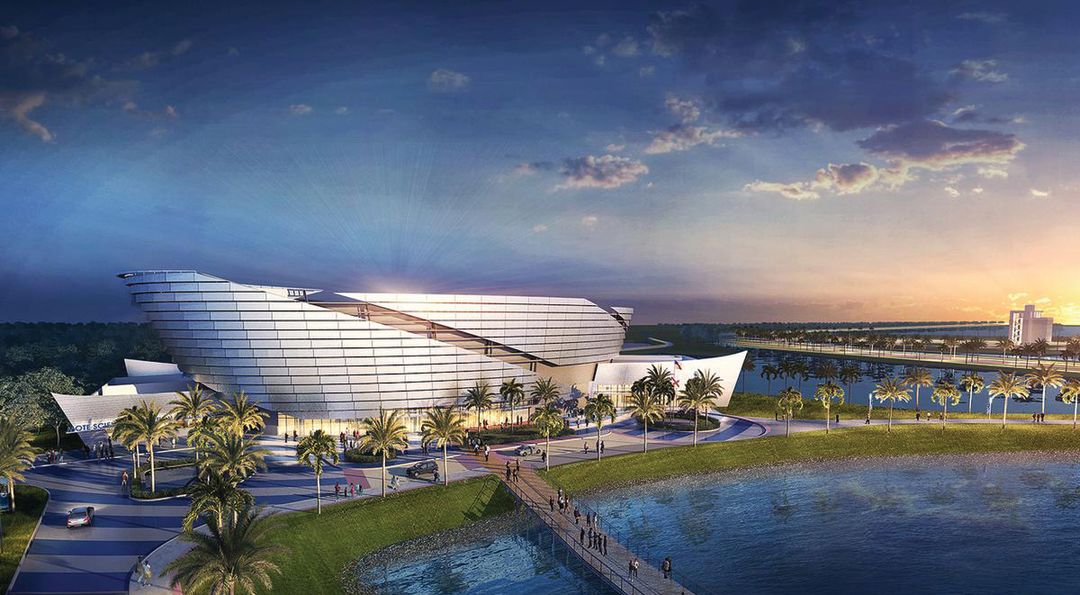
A brand-new aquarium taking shape near I-75 means more and bigger marine attractions for Mote.
Image: Courtesy Photo
Mote Science Education Aquarium
A huge project (albeit one outside the city limits) is a new venue designed to replace the current much smaller Mote Aquarium on City Island. (That longtime location will be enhanced as an International Marine Science, Technology & Innovation Park, however.) Ground was broken last November for the new facility, which will occupy 110,000 square feet on 12 acres near I-75 by the University Town Center, expecting to draw more than double the visitors at its current location—up to 650,000-700,000 a year—according to campaign leaders. In fact, it will be built to accommodate up to 1 million visitors a year in times to come.
The new aquarium will be funded by a $130 million campaign that at press time had raised well over $75 million. “It’s a heavy lift for the region,” acknowledges “Oceans for All: Improving Access to Marine Science & Technology” campaign leader Michael Moore. But a mix of funds from county, state, individuals, foundations and corporate sponsorships is expected to provide.
The aquarium design, by Tvsdesign and described as “rising into the sky like ripples in a calm sea,” is already approved, and work has begun on some of the site’s less glamorous aspects, like parking lot improvements and filling part of a central lake with 140,000 cubic tons of dirt. It should be completed in 2023 and ready to open for the 2023-24 season (in order to give Mote’s animal residents transition time), says planning and construction leader Dan Bebak.
According to Moore, Mote SEA will provide an annual economic impact of $250 million, with 260 direct and indirect jobs anticipated. Mote SEA will support plentiful new exhibits, with 1 million gallons total of animal habitat, offering hands-on teaching labs, onsite dive programs, and expanding research facilities greatly. (Great news for penguin lovers: 12 to 16 Humboldt penguins from South America will make their home in the new aquarium.) Moore says he hopes to have all monies committed by the end of 2021.
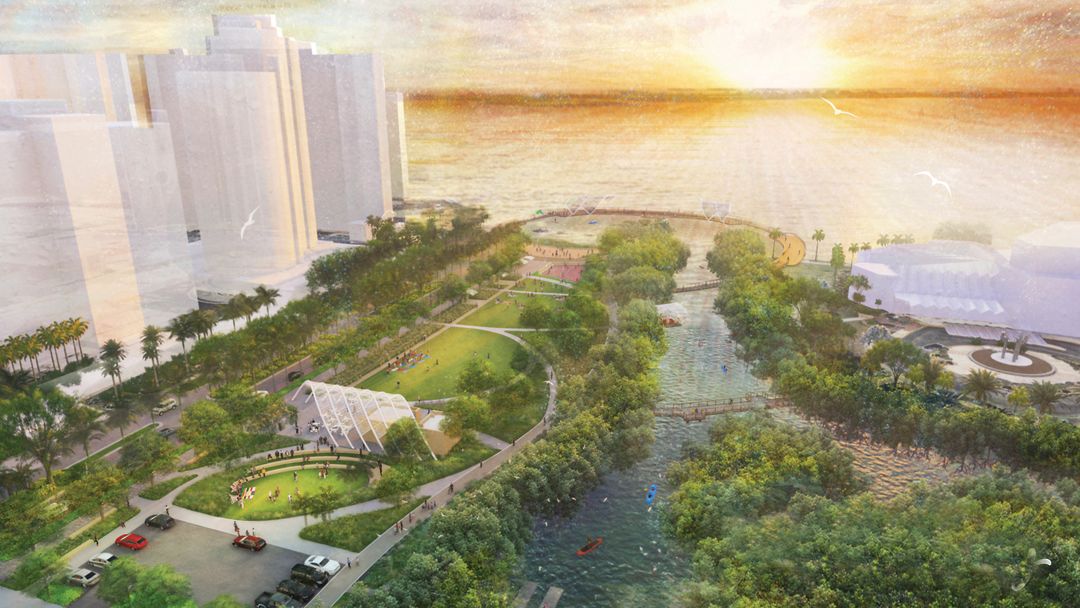
A rendering of the Bay Park
Image: Courtesy Photo
Sarasota Performing Arts Center/The Bay Park Conservancy
For years now, arts leaders and patrons have been talking about the need to replace the landmark but aging Van Wezel Performing Arts Hall with a facility that is bigger, better, and safer, as the current hall sits on a bayfront site already impacted by sea level rise and bound to be more so. While no one is saying—yet—what will happen with the Van Wezel, the vision for a public-private partnership between the Van Wezel Foundation, the City of Sarasota and the Bay Park Conservancy is growing clearer.
The Bay Park Conservancy, a nonprofit organization responsible for overseeing the transformation of 53 acres of city-owned land along the bayfront into a world-class public park, reached its initial $20 million funding goal in May. (The ultimate goal lies somewhere between $100 and $150 million and is estimated to take between seven to 10 years to reach.) So far, the Mangrove Bayou Walkway and the Fountain Garden have already opened; additional features of Phase 1 underway are the lawns, an outdoor reading room, a new kayak launch, concession pavilion and sunset boardwalk.
A crucial piece of that overall plan is a new performing arts center. As Van Wezel Foundation CEO Cheryl Mendelson says, “We fit on top of it.”
Mendelson, whose 30 years of work in Chicago included her role in developing the Harris Theater at the city’s now iconic Millennium Park, says the center is the largest capital project in terms of brick and mortar within the city. And with an estimated price tag of $275 million and upwards, to be raised through a combination of city, county, state, federal, business and philanthropic funding (including financing from a special TIF district over a 30-year time span), the backers of the center are thinking on a very significant scale.
Right now, Mendelson says, the planning is still in the early stages, with a request for design proposals coming this fall and a charette process and lecture series with the architects under consideration perhaps in the first quarter of 2022. Meanwhile, “The Future is Now” campaign is set to take place over the next five years.
The center (built on stilts for resilience to water intrusion) is planned to hold a 2,250-seat main theater (the Van Wezel has just over 1,700), a 400-seat smaller one, a 10,000-square-foot education and lifelong learning center and multiple outdoor public performance spaces. (And, yep, a center aisle, long demanded by many Van Wezel attendees, is part of the package.) In all, it’s a 230,000-square-foot venue, and, says Mendelson, “a once in a lifetime” opportunity for the region.
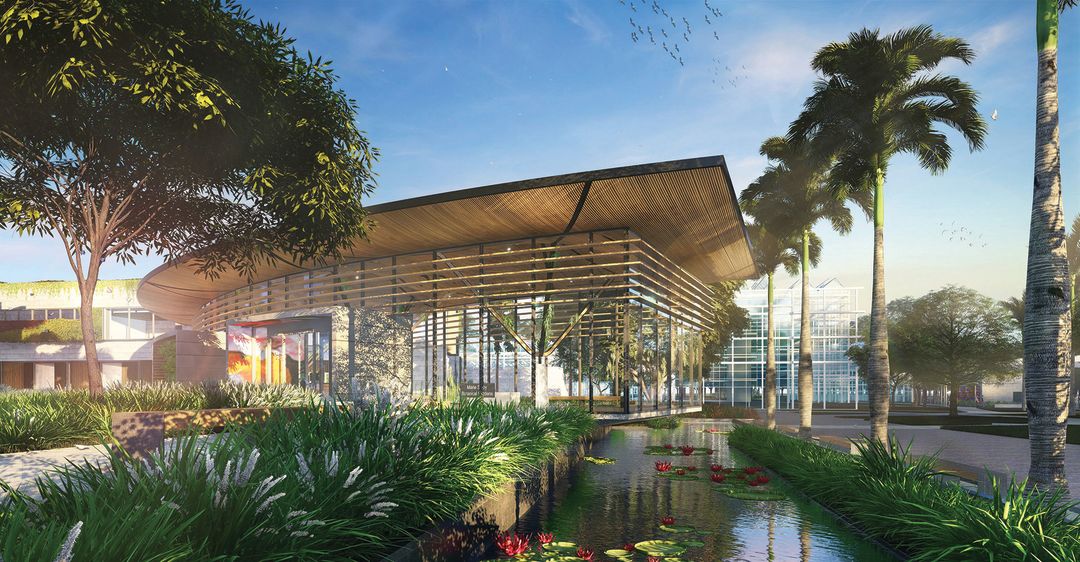
A rendering of Selby Gardens' Master Plan
Image: Courtesy Photo
Selby Gardens Master Plan
Another multimillion project for the future, Selby’s master plan has attracted more attention than other campaigns, largely because of vocal and prolonged opposition to its expansion from neighbors in its Hudson Bayou neighborhood and beyond. After changes to the original plan, approval was finally received from the city last February, and groundbreaking took place in June. Already, more than 94 percent of the gardens’ $42.5 million Phase 1 fund-raising goal for “Innovating a Greener Future—Living Inspiration for the Living Museum: The Campaign for Selby Gardens” has been committed since launching publicly in 2018.
Gifts in the amount of $1 million each from Jean Weidner Goldstein, the Floyd C. Johnson and Flo Singer Johnson Foundation, Susan and Zuheir Sofia, Audrey Robbins and Harry Leopold and, most recently, from Marcia Jean Taub and Peter Swain, seemed to be announced almost weekly since approval was received, and have helped bring that $42.5 million milestone almost within reach.
Gardens’ president and CEO Jennifer Rominiecki says that Phase 1 includes a new welcome center, a cutting-edge plant research center with herbarium lab and library, and restoration of the historic Selby House. Three phases in all, the plan will eventually encompass a new, hurricane-resistant glasshouse collection, an indoor/outdoor learning pavilion, and a full historic renovation of the Payne Mansion, which serves as a museum. It’s designed, Rominiecki says, to create a “world-class destination for plant research, conservation and environmental education, the demonstration of eco-friendly architecture and landscape design, and the first-ever net-positive botanical garden complex in the world,” with new stormwater purification methods and a solar energy plant. More open space, an edible garden/café and other improvements aim to provide a model for sustainability.
Selby Gardens currently welcomes more than 230,000 visitors a year, and its membership has grown to 16,000 households over the past few years, so all the expansion is necessary for the future, says Rominiecki. Plus, she estimates the project will generate $78 million in economic impact locally. “It’s exciting to reach this point,” she says. “Not only will people come to Sarasota and see Selby Gardens, they will come to Selby Gardens and see Sarasota.”
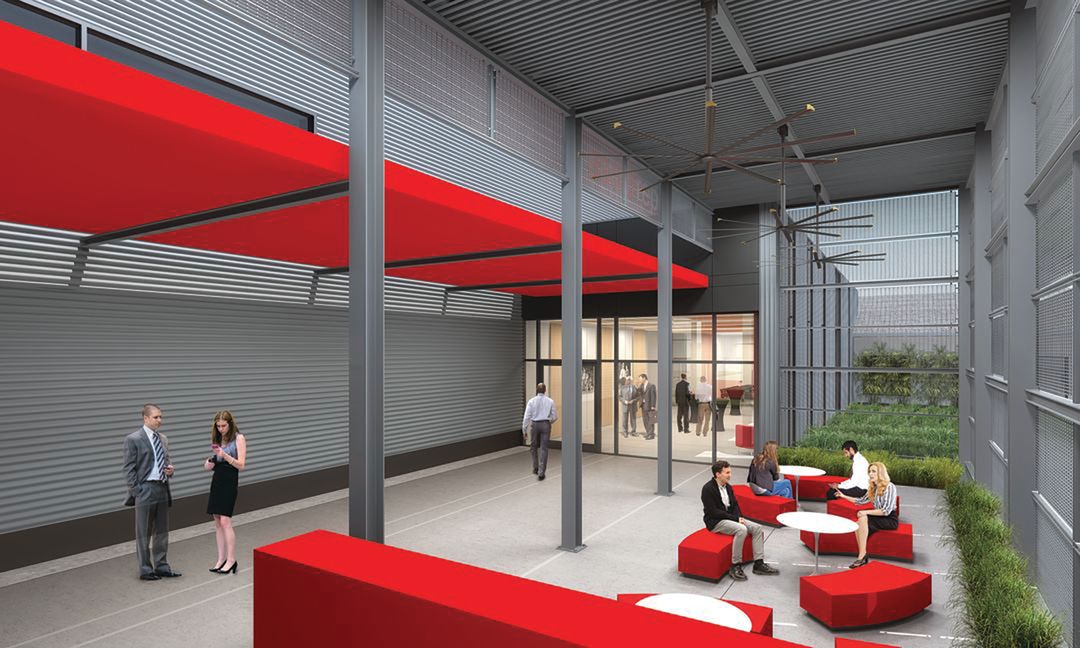
A look at the planned expansion for Asolo Rep's Koski Center
Image: Courtesy Photo
Asolo Repertory Theatre Koski Center
When you watch a production on one of Asolo Rep’s stages, chances are you’re not thinking about how it got there—about the costume shops, rehearsal spaces and offices for stage management and guest artists that lie behind the magic. That’s what the expansion of the Koski Center, a cornerstone of Asolo Rep’s strategic plan, “Shaping Our Future,” which kicked off in 2017, is all about.
Asolo Rep already has facilities for these purposes on Tallevast Road, but there’s a need for bigger production space for more complex and fast-moving shows. In the current configuration, says Asolo Rep managing director Linda DiGabriele, performers have often been told to “duck,” so as not to hit their heads on low ceilings while rehearsing production numbers from hits like Evita or The Music Man atop moving ladders.
The total campaign for expansion is expected to raise $21 million (with $11 million already in hand). Phase 1 (costing about $6 million) includes an entry trellis, lobby, conference room and catering kitchen, as well as the joining of two existing buildings on the Koski Center property. But most important for the artists—and, ultimately, for audiences—is the two-story “super rehearsal hall” that can accommodate full-size set pieces, an expanded costume shop with state-of-the-art storage, a video/audio recording studio and multi-use studios of various sizes.
The facility will also allow Asolo Rep to partner with other local and national artistic organizations, offering multiple rehearsal spaces for rent, costume rentals and more. “We’ve been bringing in New York and Chicago producers, and that means more money for Sarasota,” says DiGabriele. More hit Broadway productions have originated in regional theaters like Asolo Rep in the past decade or so; this season’s Hood, for example, presented by arrangement with part-time Sarasota resident and Broadway producer Tom Kirdahy (Hadestown), is one that may well go on to productions in New York and elsewhere.
Work has begun on the Koski Center renovations, with May 2022 as a tentative completion date for the first phase. DiGabriele says it could even be possible to rehearse the last show of the 2021-22 season (the aforementioned Hood) there. “We really need this big new rehearsal hall,” she says—especially those taller members of the cast and crew used to ducking their heads.
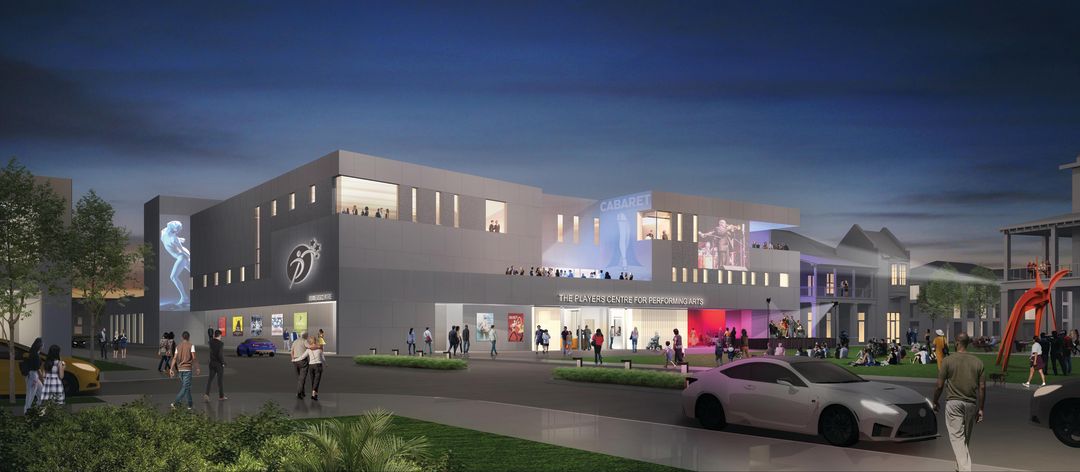
A rendering of the new Players Centre for the Performing Arts
Image: Courtesy Photo
The Players Centre for Performing Arts
As employees said a tearful farewell to the Players’ now-demolished old home on North Tamiami Trail and moved into temporary theater space at The Crossings at Siesta Key to present their next couple of seasons, Players CEO William Skaggs and his team for the “Center Stage” campaign remain hard at work on plans for the community theater’s long-awaited new home in Lakewood Ranch’s Waterside Place, with a potential 2023 groundbreaking date.
The description of that new home hasn’t changed too much since its initial conception. Set on 4.5 acres, the facility will house a 400-plus-seat main theater, a 150-200-seat black box theater, a flexible meeting/social space, and the main campus of the Players’ education and training studio, for a total of 60,000-plus square feet overall. Fund-raising goal: approximately $26.4 million, of which the Players now have somewhere around $5.5 million.
That square footage is a little less than originally planned, says Skaggs, because the Players have already purchased a building on 10th Street they can use for storage purposes. That purchase, some necessary work on the temporary space, and keeping the whole Players team on the payroll during the pandemic, have depleted some of the funds originally raised from the sale of the previous property and charitable funding.
The pandemic did lead to a hiatus in fund raising, says Skaggs, but now the Center Stage campaign has been relaunched and the Players are increasing efforts to create awareness through both paid and earned media and public relations efforts. “We’re going to touch all facets,” says Skaggs, who’s counting on how much and how quickly this area is growing to get the message out to new audiences who may not have known of the Players’ presence as the oldest (92 years strong) performing arts organization in Sarasota County.
“We have always had a local, grassroots component,” says Skaggs. “And that’s what needed here as well,” with support from the theater’s trustees, ambassadors, advocates and volunteers. “It’s not solely about the money,” he says of the group’s future. “The people are what make it happen.”
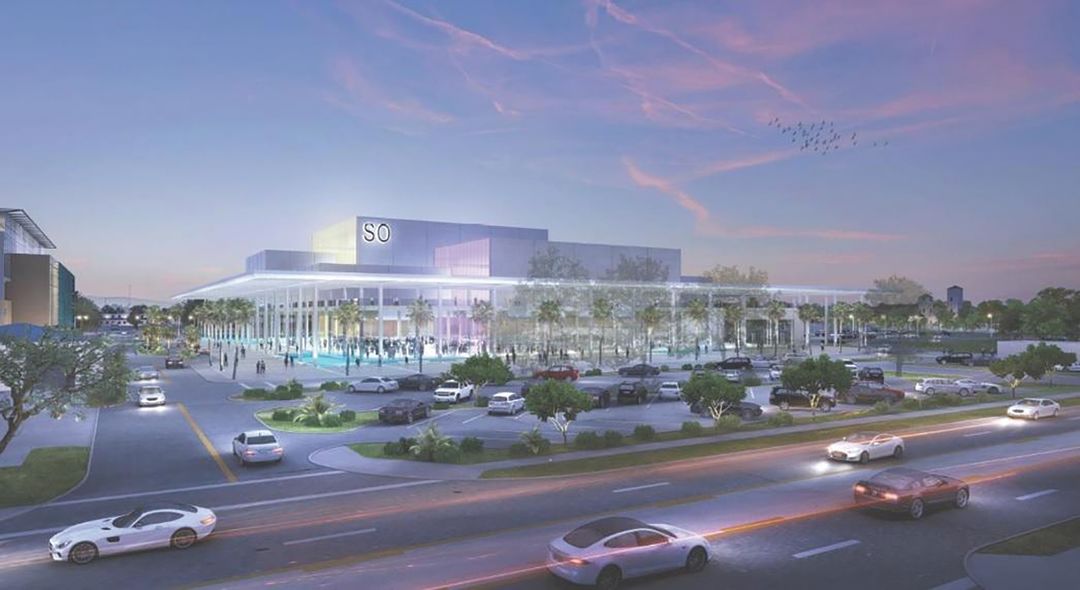
Plans for a new home for Sarasota Orchestra are still to be determined.
Image: Courtesy Photo
Sarasota Orchestra
No discussion of new artistic spaces could be complete without mentioning the Sarasota Orchestra, which has been hoping for years to build a new home, freeing it from being tied to whatever open performance dates exist at the Van Wezel or the Sarasota Opera House. (Smaller concerts also take place in Holley Hall of the Beatrice Friedman Symphony Center, near the Van Wezel.) But don’t expect to read any breaking news on a music center site here. While locations from Payne Park to the Sarasota Fairgrounds to Lakewood Ranch pop up in public and private speculation (and, in the case of Payne Park, at least, generate outrage among some park users), president and CEO Joe McKenna is mum on where the orchestra might someday set up its music stands.
McKenna says orchestra leadership has been studying diligently to meet coming decades of growth and a way to meet their own needs as well as to accommodate other music organizations that need space, like the Perlman Music Program Suncoast, Key Chorale or Choral Artists of Sarasota. The orchestra needs more space for everything from instrument storage (percussion takes up a lot of room) to a music library to more classrooms for its youth orchestra (usually 325-350 students) to practice space for the orchestra’s multiple ensembles.
Leadership also envisions a concert hall that can do justice to large-scale works by Mahler, Strauss, Beethoven and other composers of the classical canon, along with a smaller recital hall. As programming has expanded along with the orchestra’s budget (now $12 million a year), moving around comfortably has gotten harder for musicians and staff.
But there’s no official capital campaign yet for a new hall, and about the only concrete specification for a new site is that it must contain seven acres. “When we have the land, we can engage donors,” is the way McKenna puts it. The choice of a site will help to crystallize a timeline for construction, too. With the orchestra’s current site, like the Van Wezel’s, threatened by climate change and hurricanes along the bayfront, “We’re motivated,” McKenna says. “I do believe the support will be there from the community” whenever that location choice is made.